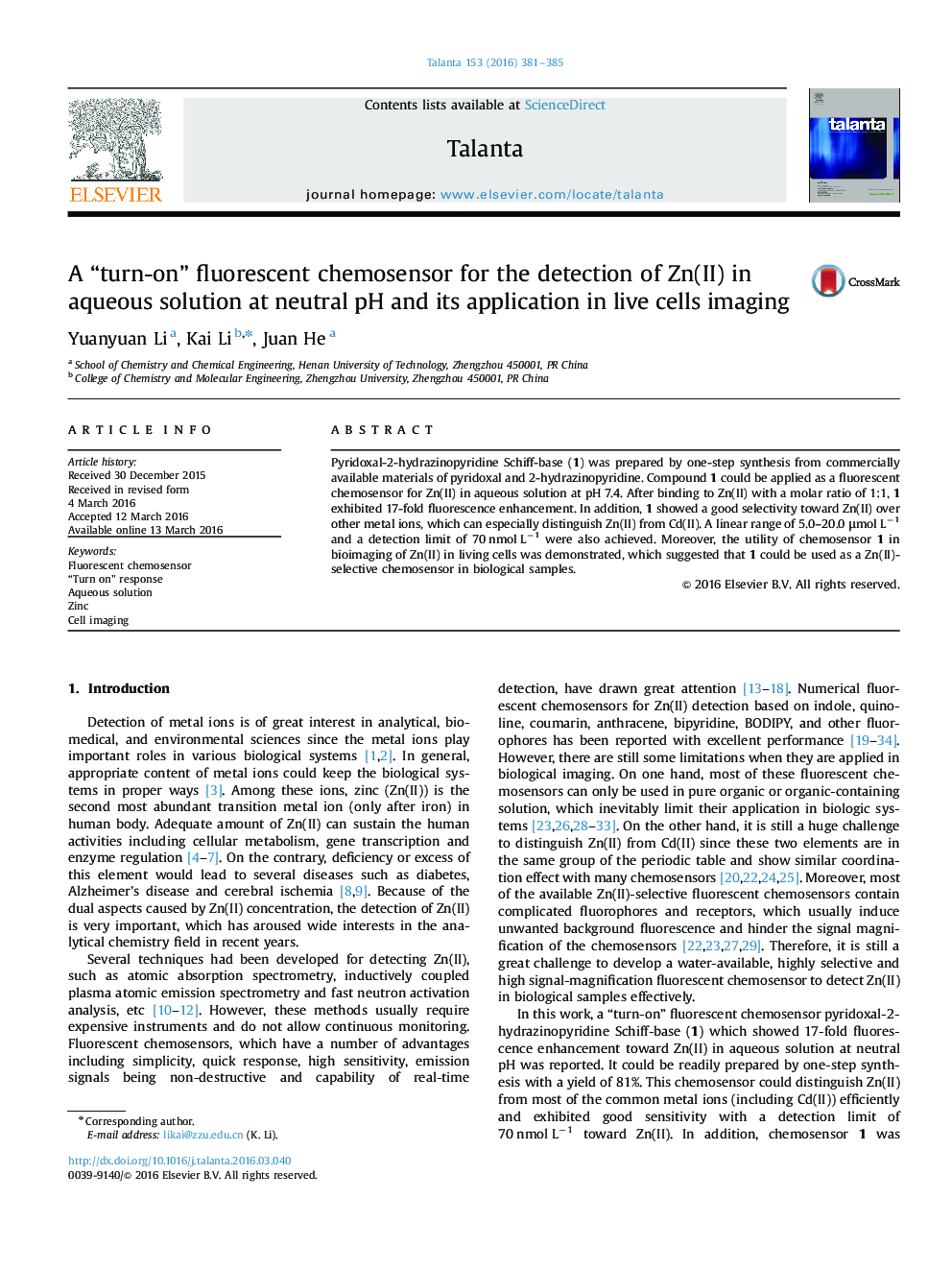| Article ID | Journal | Published Year | Pages | File Type |
|---|---|---|---|---|
| 1242598 | Talanta | 2016 | 5 Pages |
•A“turn-on” fluorescent chemosensor for the detection of Zn(II) was designed and synthesized.•The chemosensor was facilely synthesized through a one-step reaction from commercially available materials.•Detection of Zn(II) can be performed in aqueous solution at neutral pH with high sensitivity.•The chemosensor exhibits remarkably selective fluorescence enhancement to Zn(II).•The chemosensor could be efficiently delivered to live cells for bioimaging of Zn(II).
Pyridoxal-2-hydrazinopyridine Schiff-base (1) was prepared by one-step synthesis from commercially available materials of pyridoxal and 2-hydrazinopyridine. Compound 1 could be applied as a fluorescent chemosensor for Zn(II) in aqueous solution at pH 7.4. After binding to Zn(II) with a molar ratio of 1:1, 1 exhibited 17-fold fluorescence enhancement. In addition, 1 showed a good selectivity toward Zn(II) over other metal ions, which can especially distinguish Zn(II) from Cd(II). A linear range of 5.0–20.0 μmol L−1 and a detection limit of 70 nmol L−1 were also achieved. Moreover, the utility of chemosensor 1 in bioimaging of Zn(II) in living cells was demonstrated, which suggested that 1 could be used as a Zn(II)-selective chemosensor in biological samples.
Graphical abstractFigure optionsDownload full-size imageDownload as PowerPoint slide
